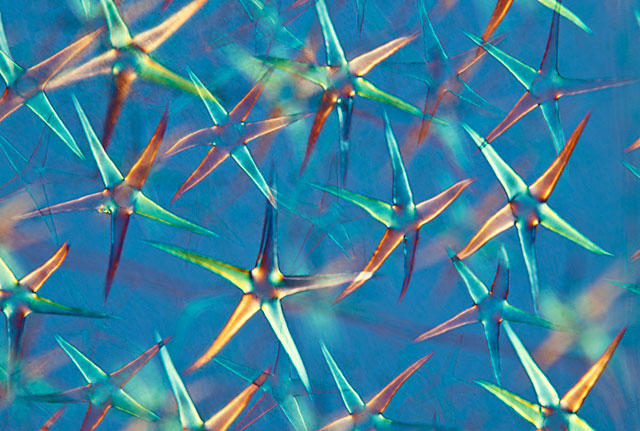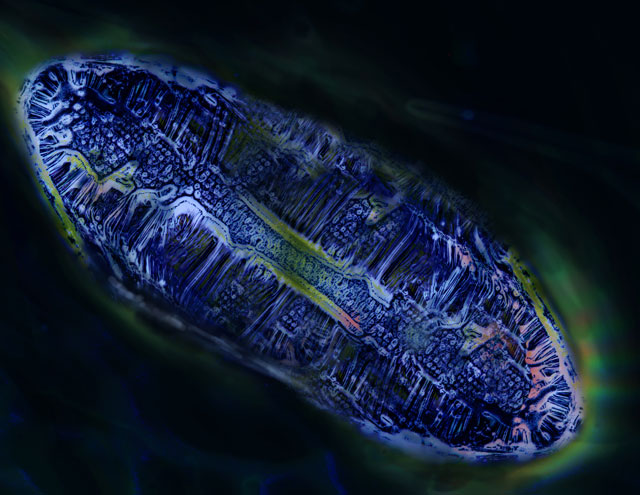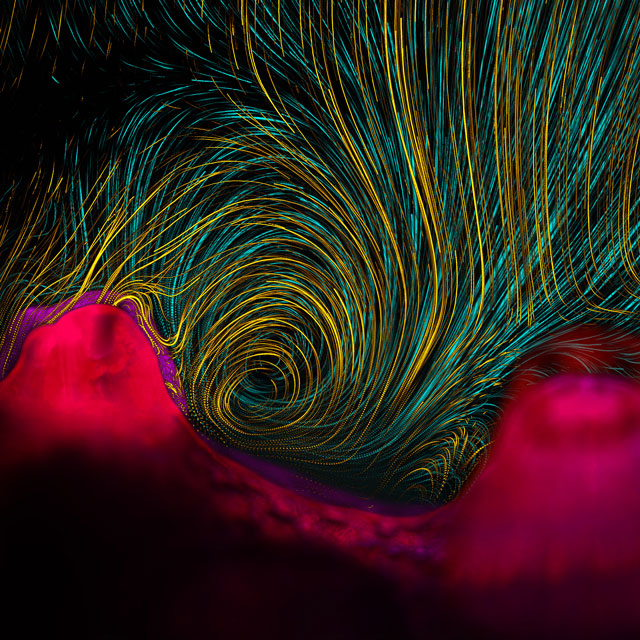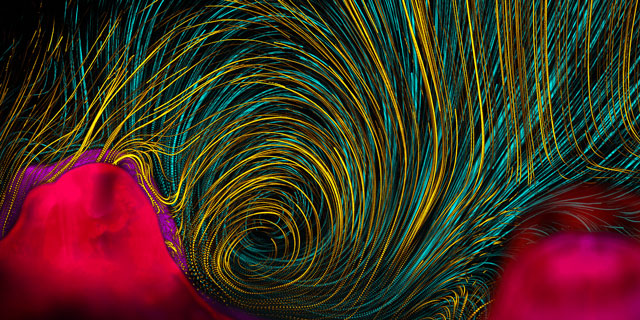From microscopic coral to massive planets, the natural world is full of beauty on a scale that can only be seen with the aid of a microscopic or a telescope. Announced today, the winners of the 11th annual International Science and Engineering Visualisation Challenge — sponsored by the journal Science and the US National Science Foundation — zoom into microscopic scales and zoom out onto planetary scales.
Here are some of the most stunning images and videos. [AAAS]
Leaf hairs of the Fuzzy Deutzia, seen under polarised light microscopy. Japanese woodworkers use the fuzzy leaves to polish wood.

Honorable mention in photography. Credit: Stephen Francis Lowry; Steve Lowry Photography
Below, self-assembling polymers arrange themselves into what looks like a microscopic spaceship.

People’s choice award for photography. Credit: Anna Pyayt and Howard Kaplan (University of South Florida)
Tiny coral polyps — in pink and purple — create a swirling vortex of water to draw in floating nutrients and flush away waste.

First place in Photography. Credit: Vicente I. Fernandez, Orr H. Shapiro, Melissa S. Garren, Assaf Vardi, Roman Stocker/Massachusetts Institute of Technology
These neurons were “painted by a technique wherein pigments are blown across the canvas using jets of air, a technique that closely emulates the spontaneous, random branching patterns of actual neurons,” according to artist Greg Dunn.

First place in illustration. Credit: Greg Dunn, Brian Edwards (Greg Dunn Design); Marty Saggese (SfN); Tracy Bale (UPenn); Rick Huganir (Johns Hopkins University)
A coronal mass ejection by the sun, and the earth’s swirling ocean and wind patterns, excerpted from NASA’s movie Dynamic Earth.
First place in video. Credit: Greg Shirah and Horace Mitchell (NASA/Goddard Space Flight Center — SVS); Tom Bridgman (Global Science & Technology, Inc.)
This bubbly, colourful video explains everything that you need to know about stem cells.
Honorable mention in video. Credit: Ben Paylor, Mike Long, Jim Till, Janet Rossant, Mick Bhatia, David Murawsky, and James Wallace (Stem Cell Network)
And here’s an explainer on how your immune system defends against bacterial invaders in the gut.
Honorable mention in video. Credit: Doug Huff and Elizabeth Anderson (Arkitek Studios); Zoltan Fehervari (Nature Immunology); and Simon Fenwick (Nature Reviews)
This video shows plant cells in 3D:
Honorable mention in video. Credit: Geoffrey J. Harlow, Shou Li, Albert C. Cruz, Jisheng Chen, and Zhenbiao Yang University of California, Riverside
And this animation explains how these weird blobby things — called Spherical Nucleic Acids — can treat genetic diseases.
People’s choice in video. Credit: Quintin Anderson (The Seagull Company); Chad Mirkin and Sarah Petrosko (Northwestern University)
